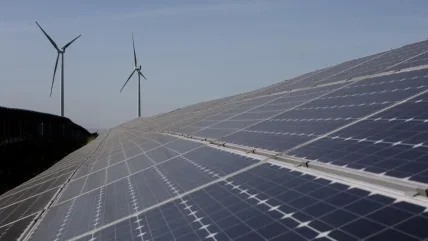
BP has entered into an agreement with DEME and Omani energy group OQ to acquire a 49% stake in the Hyport Duqm green hydrogen project in Oman.
According to the terms of the agreement, BP will become the operator of the Hyport Duqm project, while DEME and OQ will each retain a stake of 25.5% in the project company. The transaction is anticipated to be completed in Q3 2024.
Constructed on an area of 150km² within the Special Economic Zone at Duqm (SEZAD), the Hyport Duqm project is set to become the first operational and large-scale green hydrogen project in the West Asian country.
The production of green hydrogen and its conversion to green ammonia at the new facility will be powered by wind and solar energy.
Phase 1 of the Hyport Duqm project will have a combined capacity of about 1.3GW, while phase 2 is expected to have over 2.7GW upon completion.
The green hydrogen project is expected to produce approximately 330,000 tonnes of green ammonia in the first phase and over 650,000 tonnes in the second phase.
The downstream operations at the Hyport Duqm project will leverage the advanced infrastructure at the Port of Duqm to process and export green molecules to Europe and Asia.
These molecules have the potential to support various industries on their journey toward achieving sustainable decarbonisation.
Currently, the green hydrogen project is in the pre-front-end engineering design phase. Its commercial operations are scheduled to take place between 2030 and 2031.
In June this year, DEME and OQ inked a project development agreement with Hydrom pertaining to the Hyport Duqm project. Hydrom is 100% owned by Energy Development Oman and regulated by the Ministry of Energy and Minerals.
Furthermore, during the same period, DEME executed a cooperation agreement with the Egyptian government to develop the Hyport Gargoub green hydrogen production facility in Egypt’s western desert.
The proposed industrial-scale green hydrogen project will see a three-phase development. The initial phase aims to produce nearly 320,000 tonnes of green ammonia annually.


